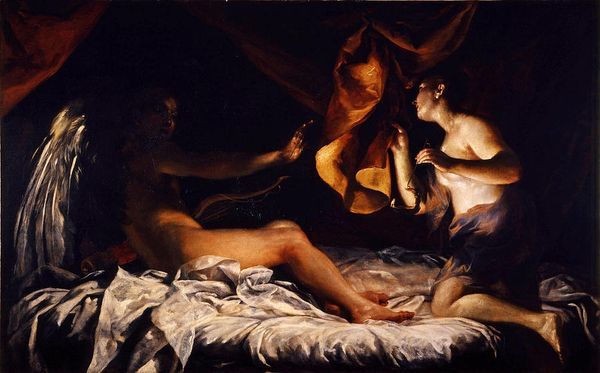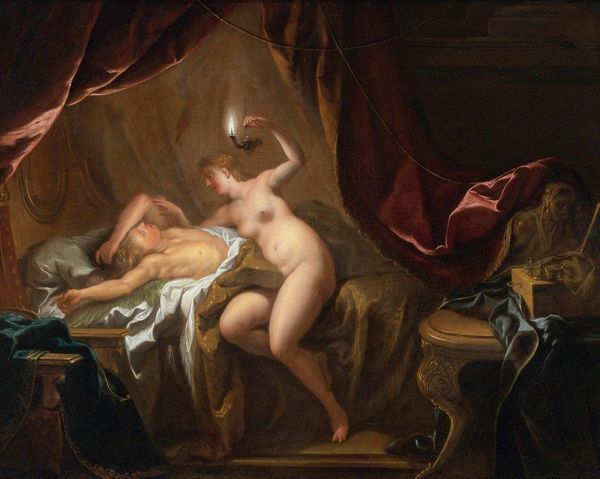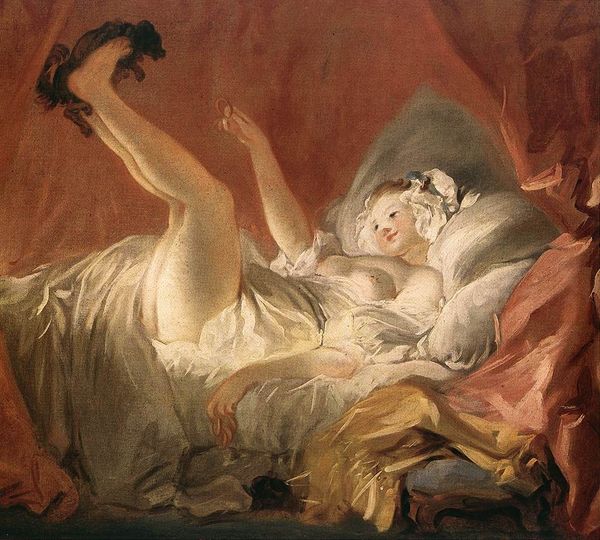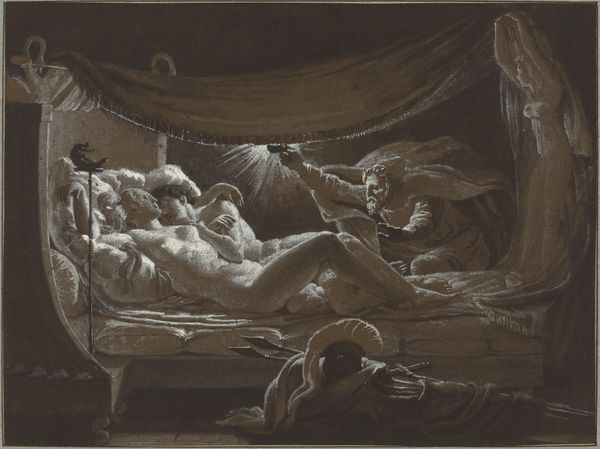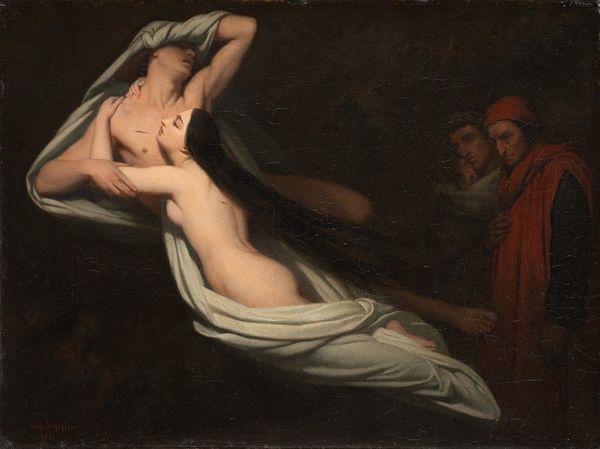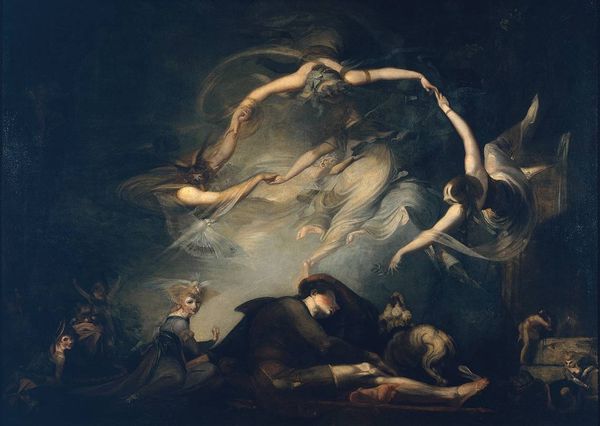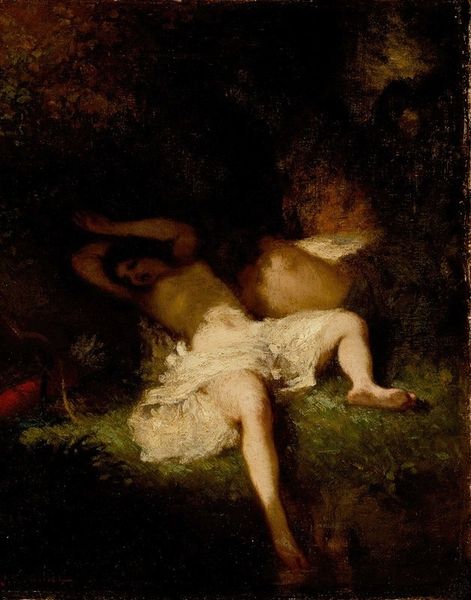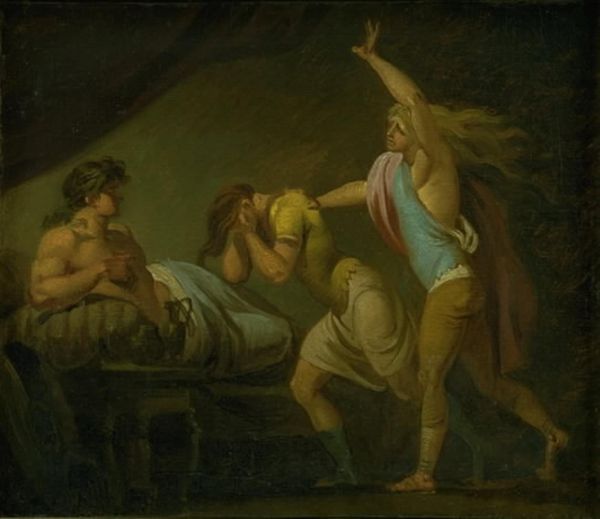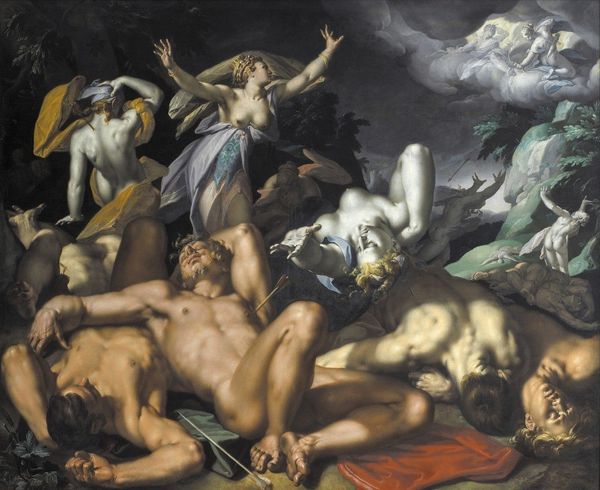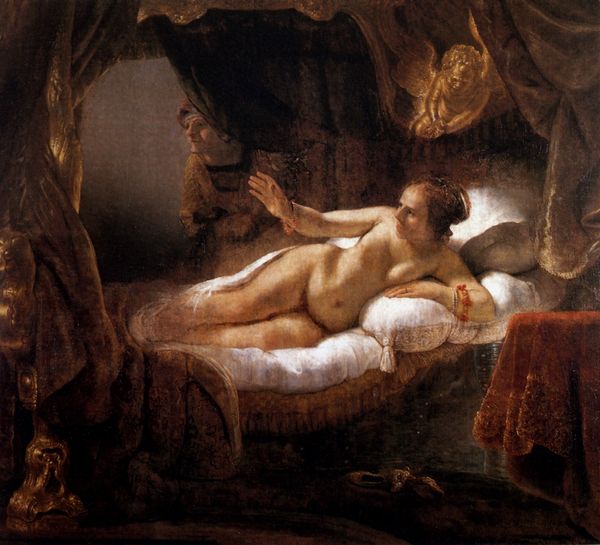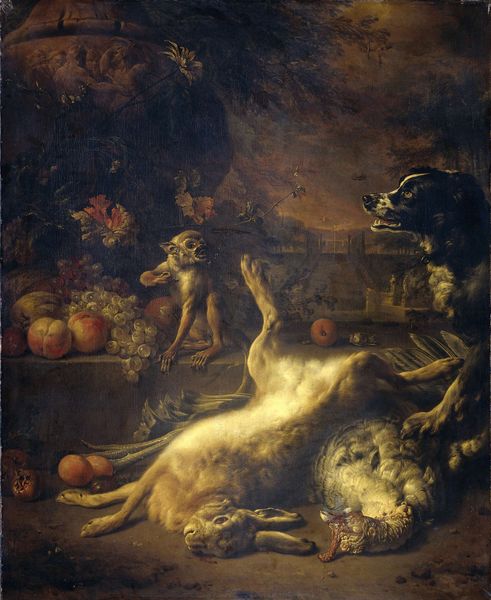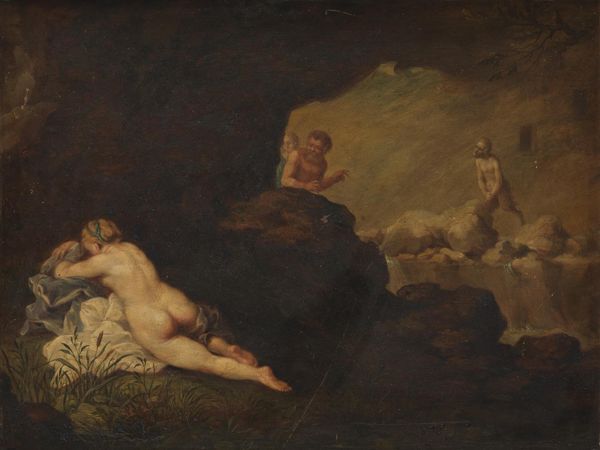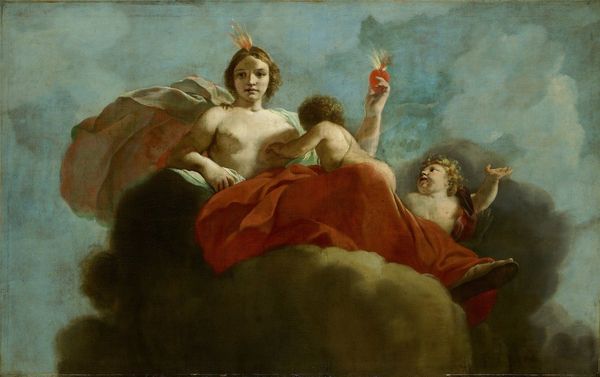
painting, oil-paint
#
allegory
#
narrative-art
#
painting
#
oil-paint
#
figuration
#
oil painting
#
romanticism
#
mythology
#
painting painterly
#
history-painting
#
nude
Copyright: Public domain
Curator: Fuseli's history painting, titled "The Vision of Catherine of Aragon," certainly commands attention with its dramatic, ethereal presentation. Editor: My initial impression is one of unease. The composition feels disjointed, almost hallucinatory. What strikes me first is the way the pale figures seem to emerge from a hazy, indistinct source. Curator: Indeed. Executed in oil paint, the artwork utilizes layering and light to depict Catherine in her bedchamber, confronted by a ghostly vision of female figures bringing her tokens. The stark contrast between the dimly lit room and the radiant apparitions is particularly notable. How do you interpret these spectral figures, given your focus on iconography? Editor: These aren't merely ghosts. They’re symbols, laden with meaning. Notice the offering of the cap. It's a sign of Queenhood that is coming her way. The open books signify not only Catherine’s learning and literacy, unusual for the time, but also foreshadow her appeals based on historical precedents during her fight against annulment. They speak to Catherine's faith and her position as Queen. It's a powerfully female, almost matriarchal, symbol that contrasts heavily with Henry's future treatment of his wives. Curator: Fascinating. For me, the material aspect also highlights class and labor divisions of the time period in creating visual narratives that justified hierarchy and legitimized its symbols of royalty, wealth, and taste, to separate itself from that of ordinary or lower classes of art, and also that of artistic knowledge and interpretation. How art could shape social values. What kind of cultural labour they had to commit on artistic labour? What did ordinary classes interpret it? Editor: But what do you think Fuseli hoped to communicate with this striking display? Curator: Well, Fuseli frequently explored the realm of the subconscious in his works. He wanted to find that thin veil and question what lay behind them: love, terror, all emotions. I can see this exploration as less as an expression of Catherine's lived experience, but one about challenging class systems and materials of artistic productions. Editor: Perhaps that’s a modern read. Either way, this visual feast, so rife with historical and cultural layers, continues to inspire discourse today. Curator: Agreed, by examining material production, artistic methods, we see that “The Vision of Catherine of Aragon” really delivers beyond being just another myth told again in time and offers complex material social themes.
Comments
No comments
Be the first to comment and join the conversation on the ultimate creative platform.
